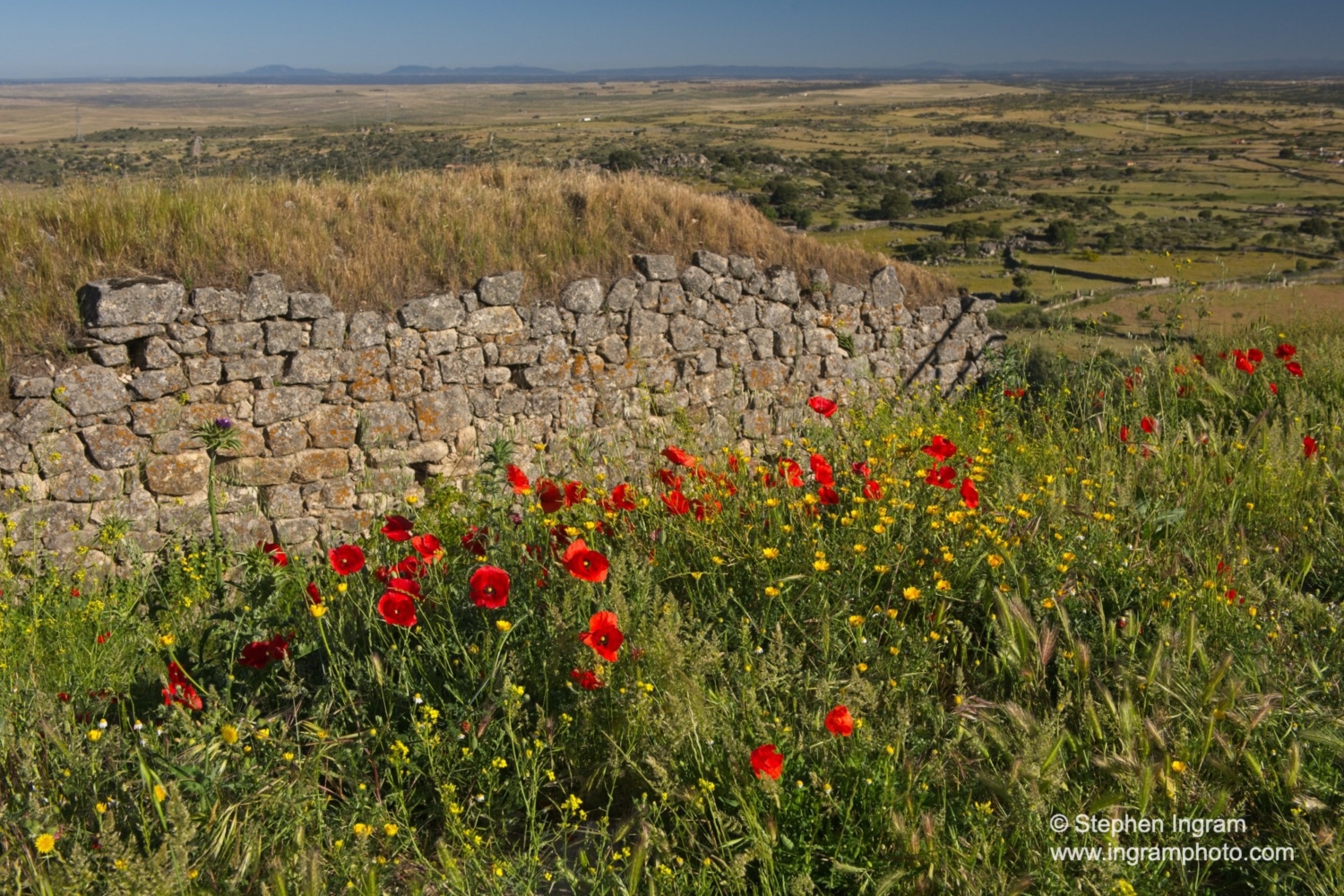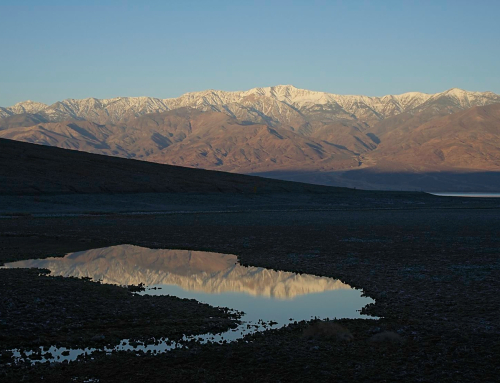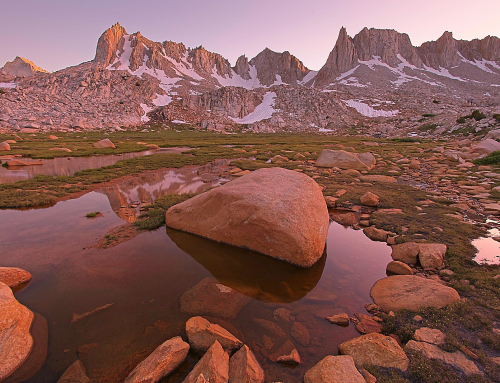As I contemplated writing about and posting my favorite photos from 2019, I realized I did not want to repeat any photo postings from the Baja peninsula or the California desert that my throng of followers read earlier in the year. Most of the images I did want to share were from a two-week trip to west-central Spain and southwestern England that Karen and I made in May, so…. here is what I should have posted in June. BTW, all images were made with a Nikon Z7 and one of two lenses, my trusty Nikkor 24-70 mm f2.8 and, for the birds, a lightweight Nikkor 300 mm f5.6 with a Nikon 1.7x teleconverter, making it effectively a 510 mm f6.7 lens.
The initial impetus for this European excursion was to join the Cloud Appreciation Society’s four-day Sky Gathering on Lundy Island in the Bristol Channel, but the birds of Spain beckoned, and Extremadura is known as one of the top birding destinations in Europe. So, with only one week available, we flew to Madrid, rented a car, and drove west to the small villages, Roman ruins, mountains, and open agricultural country of Extremadura. This province is known for its expansive dehesa, a “multifunctional agrosylvopastoral system” of oak savanna with cork oak and holm oak that shade pastures of grass for grazing or grain production. This form of sustainable agriculture has been practiced for centuries and provides habitat for many species of wildlife, including the endangered Spanish imperial eagle (which, alas, we did not see).

Old olive trees pruned perpetually, with wildflowers, on the road from Oropesa to Trujillo, Extremadura, Spain.

View from 14th Century Castillo de Oropesa, Spain

Red corn poppies, asters, and church, on the road from Oropesa to Trujillo, Extremadura, Spain

Old roof tiles encrusted with lichens, Oropesa, Spain

View of ancient Roman ruins and stone walls below Trujillo, Extremadura, Spain
In Trujillo, a spectacular, well-preserved medieval village on a hill, we watched pairs of nesting white storks greet each other with bill-clacking as one of the adults returned from feeding in the surrounding lowlands. There were active nests on nearly all of the turrets and church steeples around the Plaza Mayor. White storks reportedly return with the same partners to the same nesting place each year.

A pair of white storks greet each other with bill-clattering at their nest in Trujillo, Spain

A pair of white storks greet each other with bill-clattering and throwing their heads back.
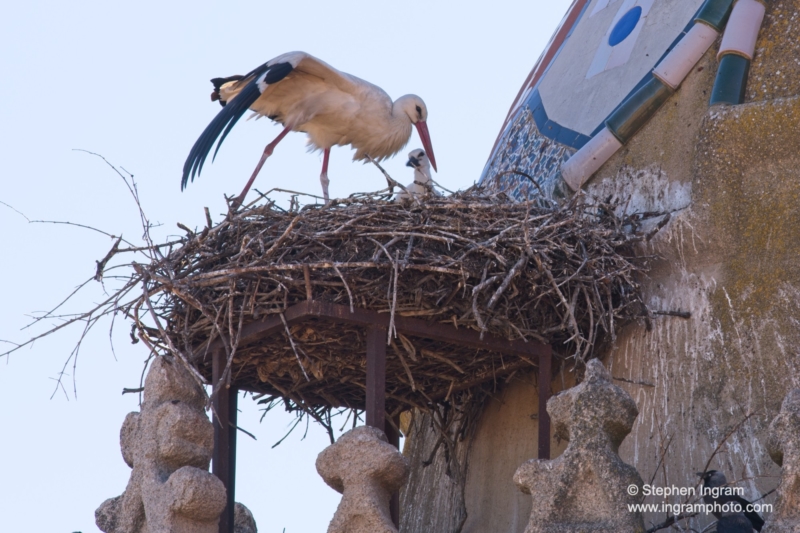
White stork tending to its little storklet, Trujillo, Spain

White storks nesting near Plaza Mayor, Trujillo, Spain
Parque Nacional Manfrague was another highlight of our brief time in Spain, and with the help of an excellent local naturalist/bird guide, Jesús Porras with Iberian Nature, we saw nesting white Egyptian vultures, griffon vultures, the familiar peregrine falcon, very rare (and very large) Eurasian black vultures, and rare black storks, all of which winter in Africa and breed in Europe. Many of these soaring bird species nest on the enormous rocky cliffs of Peña Falcon, a habitat feature which helps make this national park home to 75% of Spain’s protected bird species.

A pair of European bee-eaters, Parque Nacional Manfrague, Extremadura, Spain

A butterfly-in-progress rests on the shadow of the scaffold the artist used to create it, Jerte, Spain. Lucky timing: one minute later the mariposa was off her perch.
In our continuing quest to see the relatively wild side of Spain, we drove north from Trujillo towards the Sierra de Gredos and the Valle de Jerte, one of the main cherry-growing regions of Europe. Like much of Extremadura, few tourists visit this valley, but it does cater to recreationists who come for the hiking, biking, and kayaking that this scenic mountainous region offers. We “thinned” some overhanging cherries as we walked along a public footpath – a great way to end a hike, and a memorable way to end our visit to this beautiful country.

Valle de Jerte, Extremadura, Spain, with cherry orchards below native oak forests along the ridge.

Cascadas on Rio Nogaleas, Montes de Tras la Sierra, near Jerte, Spain

Flowering lavender, a common shrub, with other wildflowers and oaks, with Sierra de Gredos in background, between Jerte and Jarandillo, Spain.
On to Olde England
Once in the bustle of London, we met our eclectic group of cloud appreciators and drove (past Stonehenge) to the North Devon coast where the next day we boarded the ferry for a two-hour voyage into the Bristol Channel. Lundy Island is a chunk of 65 million year-old granite that is 3.2 miles long and about a half mile wide, inhabited for the past 4000 years by Bronze Age people, Vikings, pirates, scalawags, shipwrecked sailors, lighthouse keepers, ranchers, and now tourists and staff of the Landmark Trust. Lundy is now a wildlife sanctuary managed by the Landmark Trust, and owned by the National Trust, and is the most important seabird breeding area in southern England, as well as a crucial stopover location for migratory birds.
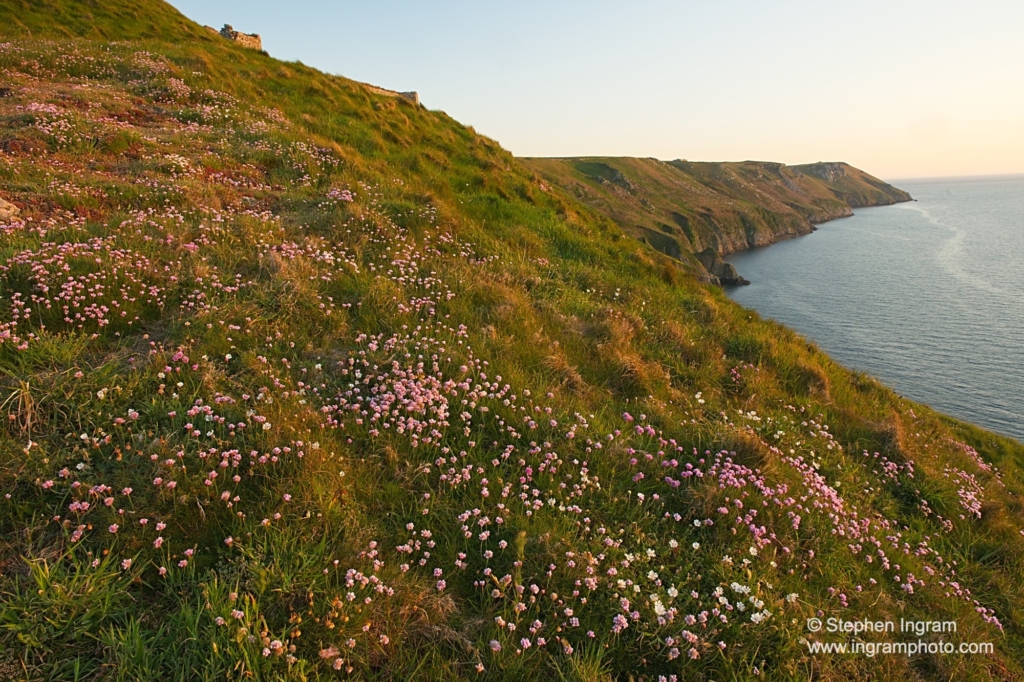
Sea thrift (Armeria maritima) in flower above southeast coast of Lundy Island, England

Bronze Age house ring above Gannets Bay, with Bristol Channel in background, Lundy Island, England
Lundy got its name from Marauding Vikings, who named it “Lundey,” meaning Puffin Island. Once home to thousands of Atlantic puffins, it now supports a slowly growing colony of several hundred. In addition to breeding puffins, other seabirds we saw included fulmars, Manx shearwaters, black-backed gulls, northern gannets. guillemots, and razorbills. Over 300 species of birds have been observed on Lundy Island.

Eurasian oystercatcher, Lundy Island, Devon, England

Road and marker for inebriated lighthouse keepers with view north to Halfway Wall, Lundy Island

St. Helen’s Church and town on Lundy Island, England.
The Cloud Appreciation Society members were here for presentations on weather forecasting, the historical use of clouds in art and literature, storm chasing in the American midwest, scientific explanations of auroras, eclipses, lightning and sprites, workshops, and walks around the island. (No, it is not a cult). All of the presentations took place in St. Helen’s Church and were live-streamed (note the white satellite dish by the church) to any of the 50,000 CAS members worldwide who wanted to join in. Every one of the presenters were excellent, but one of the more unusual shows given was by Dutch artist Berndnaut Smilde, who talked about the art of making indoor clouds, and in one of the workshops we took photos of his conjured short-lived clouds (see below). Our evenings were spent in the heart of Lundy at the Marisco Tavern, where we would have dinner, drink beer, and have pub quizzes about the day’s highly informative talks. We had a great time on Lundy, but I think the sheep were happy to see us go.

A cumulus fractus cloud made by Berndnaut Smilde in St. Helen’s Church, Lundy Island

Several sheep stage a “sit-in” to protest the unfair portrayal of them as fair-weather cumulus clouds with legs.

First light on remnants of The Castle, constructed in 1244, Lundy Island, England

Cirrus vertebratus cloud formation over southern point of Lundy Island, England, seen as we boarded the M.S. Oldenburg for the return voyage.
If you want to read and see more about the CAS Gathering on Lundy Island, see A Cloudspotters’ Guide to Climate Change, written and photographed by two attendees who write and photograph for Reuters. It is really well done. And thanks for reading this far!
If you’re a lover of clouds and mountains (and you live nearby), you may be interested in my “Clouds and Mountains of the Eastern Sierra” photography exhibit at Mono Arts Council in Mammoth from February through April, 2020. I’ll write something about that here in February, so check back.
Happy New Year!

